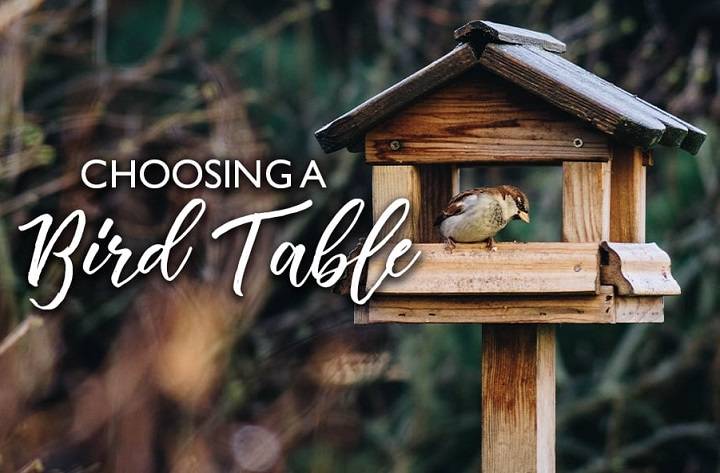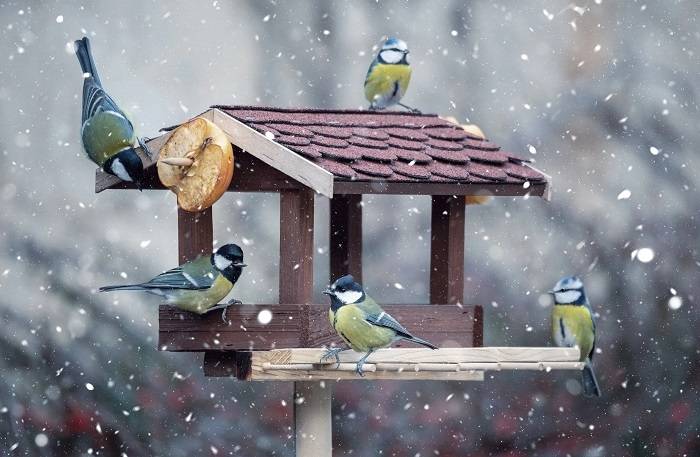Bird tables are a popular feature in gardens across the United Kingdom, providing a convenient and accessible feeding station for wild birds. These simple structures offer a variety of benefits, from attracting a diverse range of bird species to providing essential nutrition and contributing to the conservation of native wildlife. In this comprehensive guide, we will explore the world of bird tables in the UK, including their importance, types, placement, maintenance, and tips for attracting birds to your garden.
Importance of Bird Tables
Feeding Wild Birds:
Bird tables play a crucial role in supplementing the natural diet of wild birds, especially during the winter months when food sources may be scarce. They provide a reliable source of nutrition, helping birds maintain energy levels and survive harsh weather conditions.
Wildlife Observation:
Bird tables offer a unique opportunity for birdwatchers and nature enthusiasts to observe and appreciate the diverse avian species that visit their gardens. They provide a close-up view of birds feeding, bathing, and interacting with one another, enhancing the enjoyment of outdoor spaces.
Types of Bird Tables
Traditional Wooden Bird Tables:
Wooden bird tables are a classic choice, featuring a raised platform with a pitched roof to protect food and birds from the elements. They come in various designs and sizes, from simple rustic styles to elaborate decorative models.
Hanging Bird Feeders:
Hanging bird feeders are another popular option, consisting of suspended trays or tubes filled with bird seed, nuts, or suet. They attract smaller bird species such as tits, finches, and sparrows and can be hung from trees, pergolas, or hooks.
Ground Feeders:
Ground feeders are low-level bird tables placed directly on the ground or elevated on short legs. They are suitable for ground-feeding birds such as robins, blackbirds, and thrushes, offering easy access to food without the need for perching.
Placement and Location
Strategic Positioning:
Place your bird table in a quiet and sheltered area of your garden, away from potential predators such as cats and close to natural cover such as trees or shrubs. Ensure there is adequate space for birds to approach and land safely.
Safety Considerations:
Position the bird table at least two meters away from windows to prevent collisions and provide a clear line of sight for approaching birds. Avoid placing it directly under trees or overhanging branches to minimize the risk of ambush by predators.
Maintenance and Hygiene
Regular Cleaning:
Clean your bird table regularly with a mild disinfectant to remove dirt, debris, and bird droppings that can accumulate over time. Ensure that feeders are emptied, cleaned, and refilled with fresh food to prevent the spread of disease.
Bird Tables in the UK
Seasonal Maintenance:
Conduct seasonal maintenance on your bird table, checking for signs of wear and damage, and repairing or replacing any broken parts. Consider applying a weatherproof sealant or paint to protect wooden surfaces from moisture and decay.
Attracting Birds to Your Bird Table
Variety of Food:
Offer a variety of bird foods, including seeds, nuts, suet, mealworms, and fruits, to attract a diverse range of bird species with different dietary preferences.
Water Source:
Provide a fresh water source such as a bird bath or shallow dish near your bird table to attract birds for drinking and bathing, especially during hot weather or dry spells.
Conservation and Wildlife Benefits
Supporting Bird Populations:
Bird tables contribute to the conservation of native bird species by providing supplemental food sources, especially in urban and suburban areas where natural habitats are limited.
Educational Opportunities:
Bird tables offer educational opportunities for children and adults to learn about bird behavior, ecology, and conservation, fostering a deeper appreciation for the natural world and wildlife.
Related Post:
Deciphering the Ideal Space Requirements for Ducks
Unveiling the Mysterious Egg-Laying Habits of Ducks
Exploring the Essential Role of Duck Grit in Avian Health
In conclusion, bird tables are valuable additions to any garden, providing essential nutrition, shelter, and entertainment for wild birds while offering countless opportunities for wildlife observation and appreciation. By selecting the right type of bird table, strategically placing it in your garden, and maintaining it properly, you can attract a diverse array of bird species and contribute to the conservation of our feathered friends. Whether you’re a seasoned bird enthusiast or a novice gardener, investing in a bird table is a rewarding way to enhance garden biodiversity, connect with nature, and create a welcoming habitat for birds to thrive.




